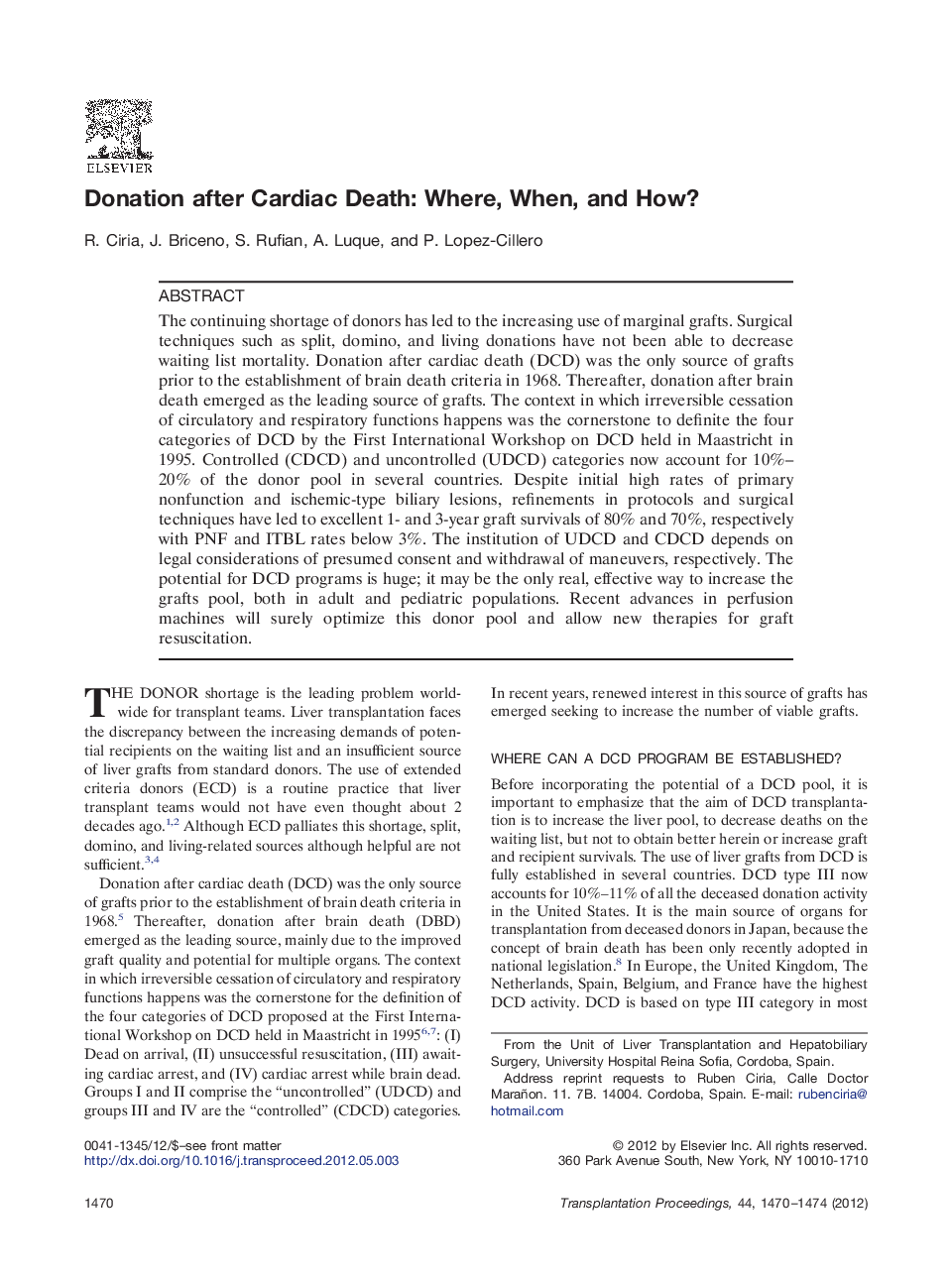| کد مقاله | کد نشریه | سال انتشار | مقاله انگلیسی | نسخه تمام متن |
|---|---|---|---|---|
| 4259880 | 1284577 | 2012 | 5 صفحه PDF | دانلود رایگان |

The continuing shortage of donors has led to the increasing use of marginal grafts. Surgical techniques such as split, domino, and living donations have not been able to decrease waiting list mortality. Donation after cardiac death (DCD) was the only source of grafts prior to the establishment of brain death criteria in 1968. Thereafter, donation after brain death emerged as the leading source of grafts. The context in which irreversible cessation of circulatory and respiratory functions happens was the cornerstone to definite the four categories of DCD by the First International Workshop on DCD held in Maastricht in 1995. Controlled (CDCD) and uncontrolled (UDCD) categories now account for 10%–20% of the donor pool in several countries. Despite initial high rates of primary nonfunction and ischemic-type biliary lesions, refinements in protocols and surgical techniques have led to excellent 1- and 3-year graft survivals of 80% and 70%, respectively with PNF and ITBL rates below 3%. The institution of UDCD and CDCD depends on legal considerations of presumed consent and withdrawal of maneuvers, respectively. The potential for DCD programs is huge; it may be the only real, effective way to increase the grafts pool, both in adult and pediatric populations. Recent advances in perfusion machines will surely optimize this donor pool and allow new therapies for graft resuscitation.
Journal: Transplantation Proceedings - Volume 44, Issue 6, July–August 2012, Pages 1470–1474